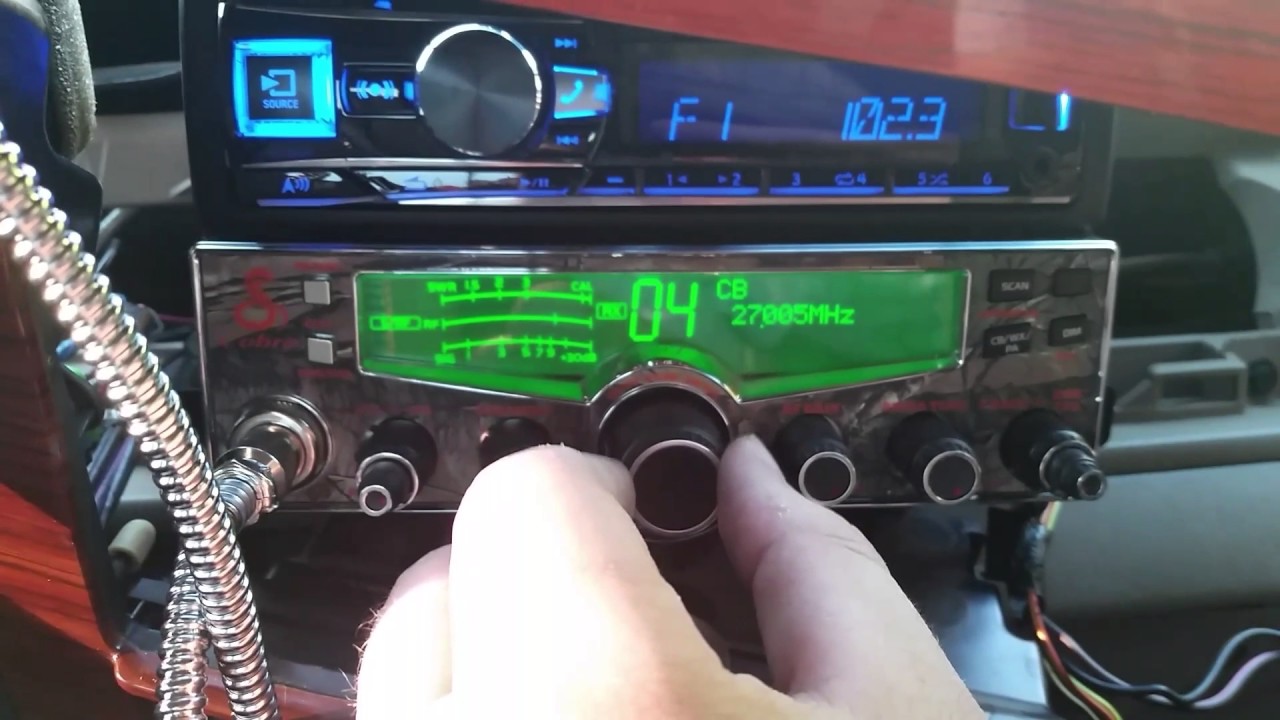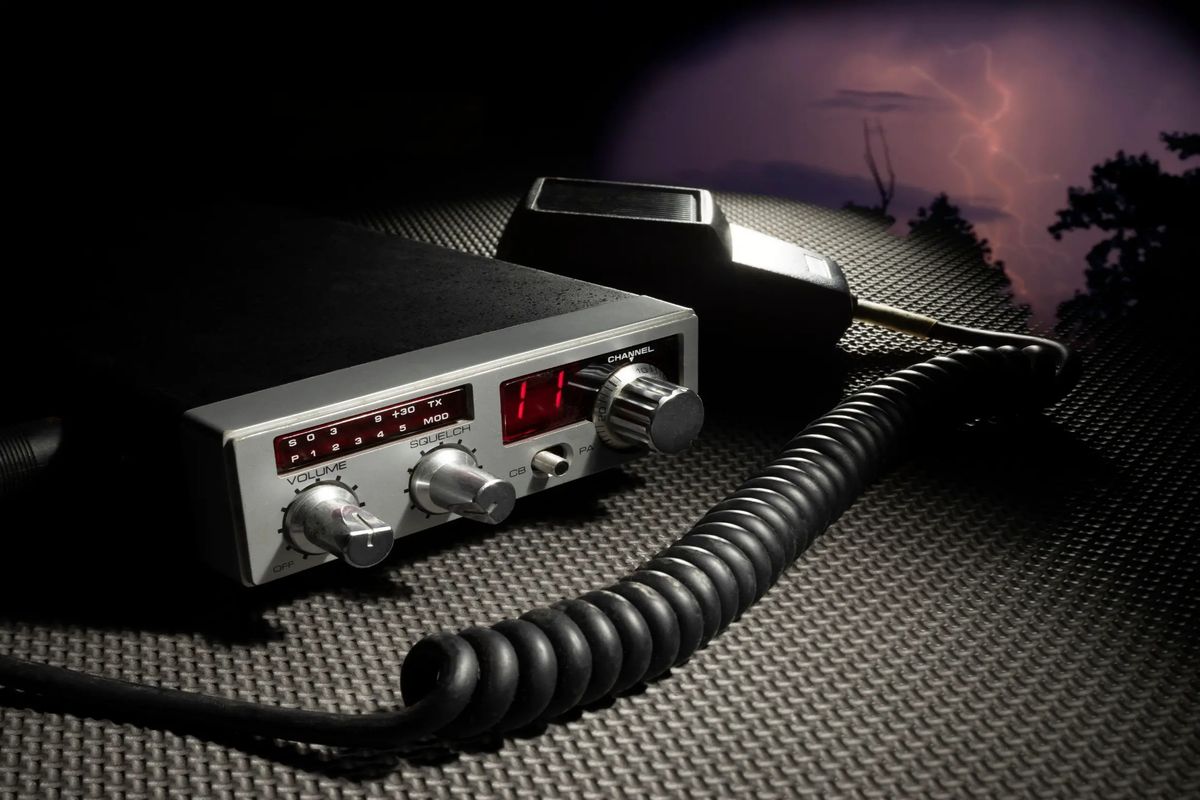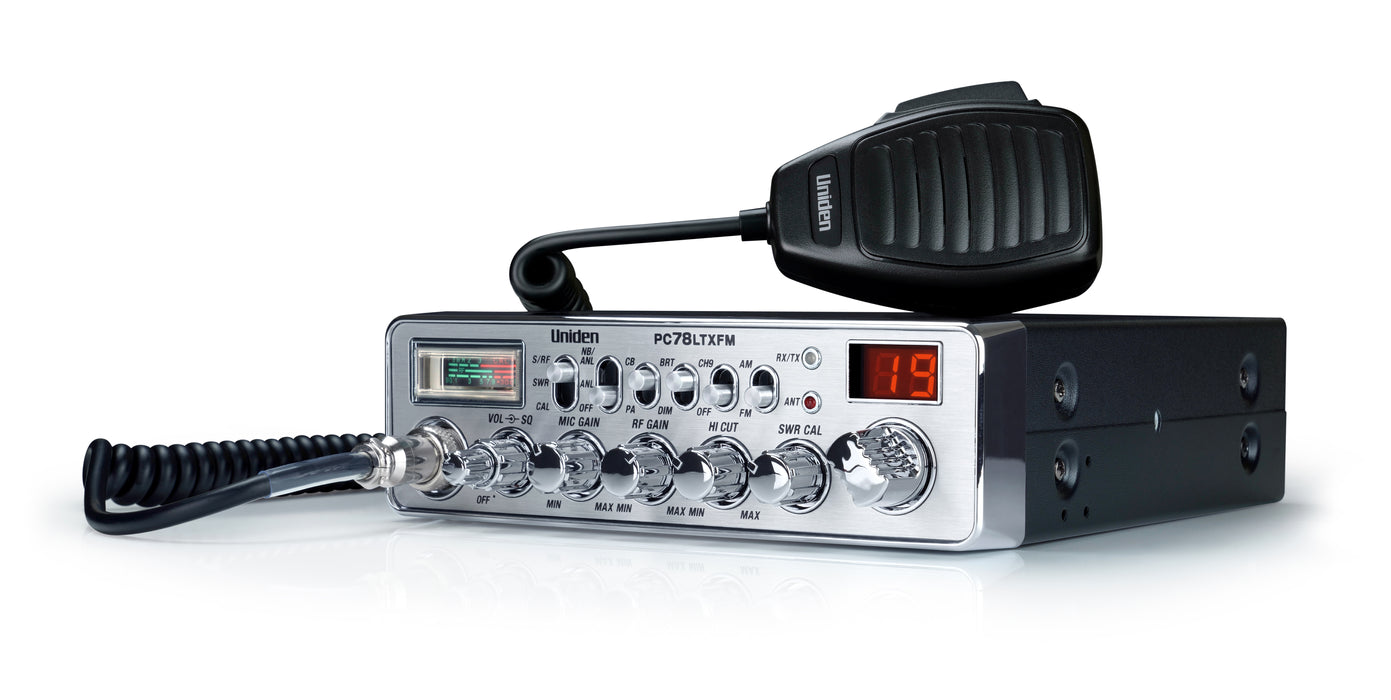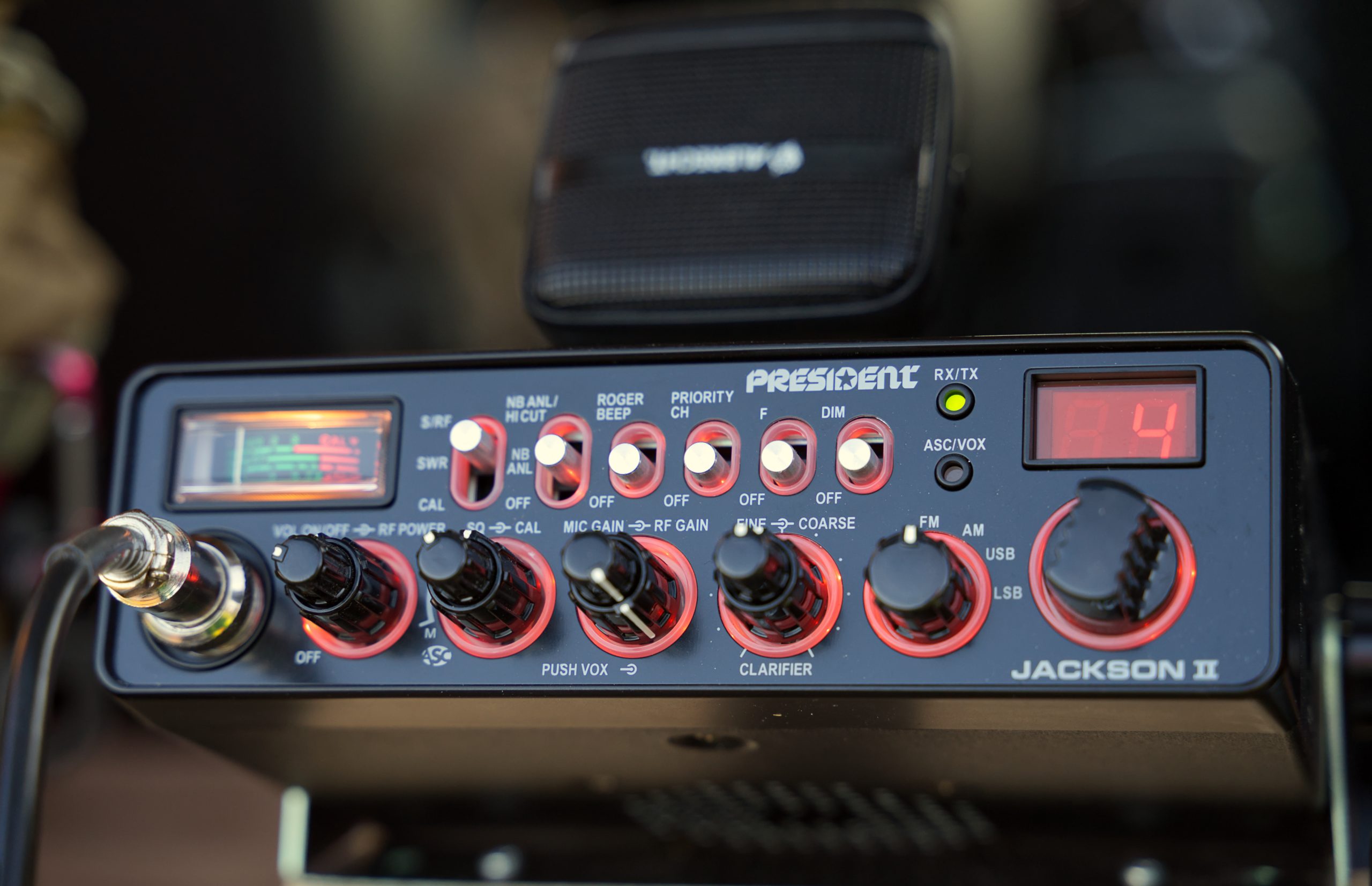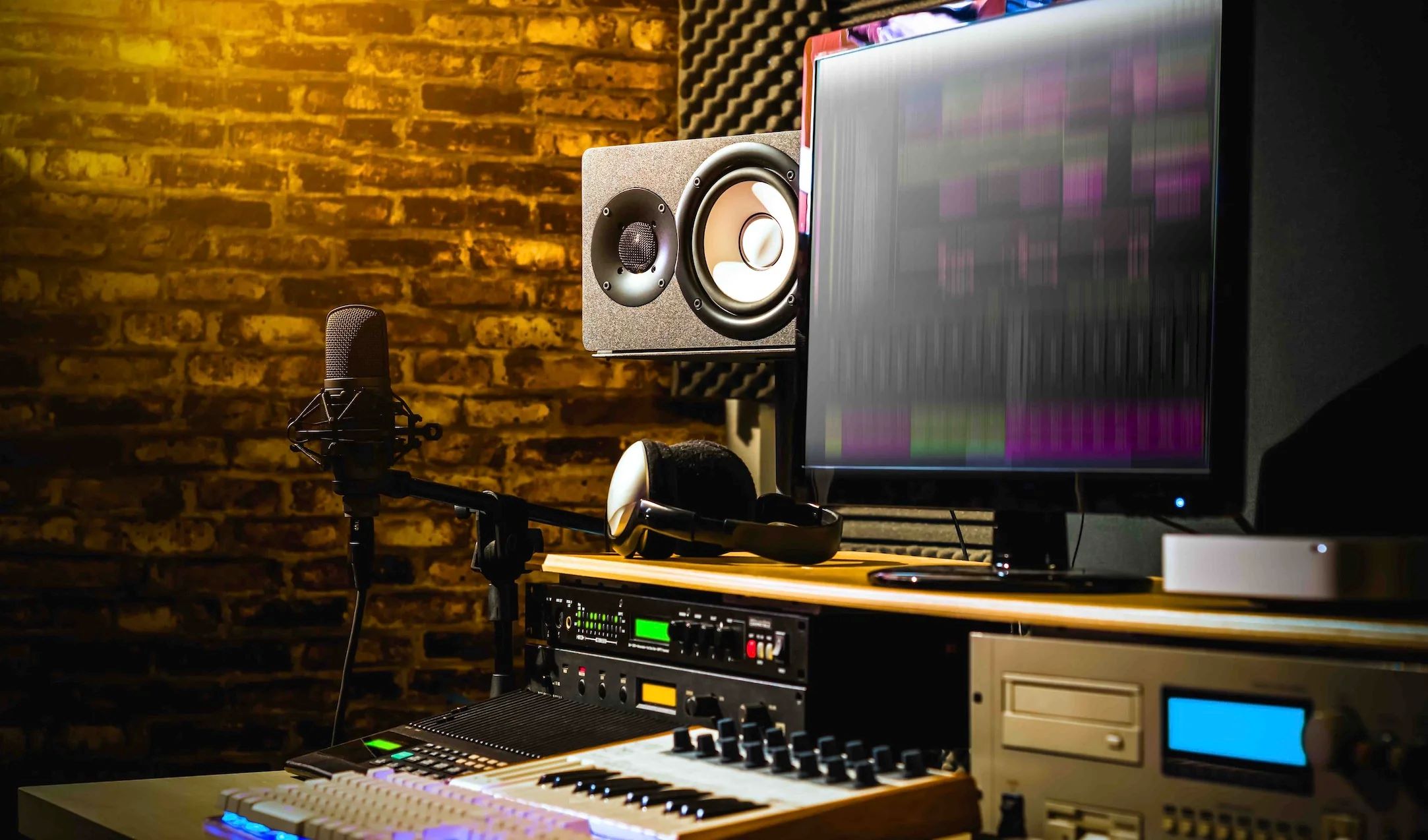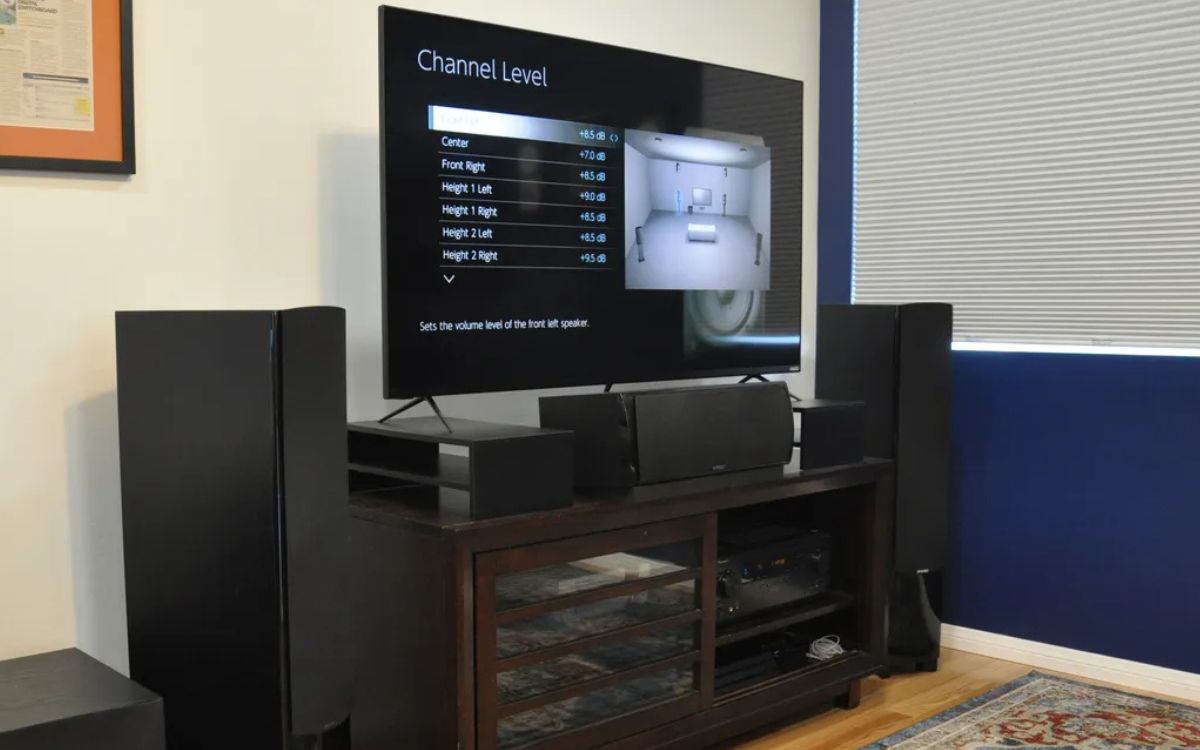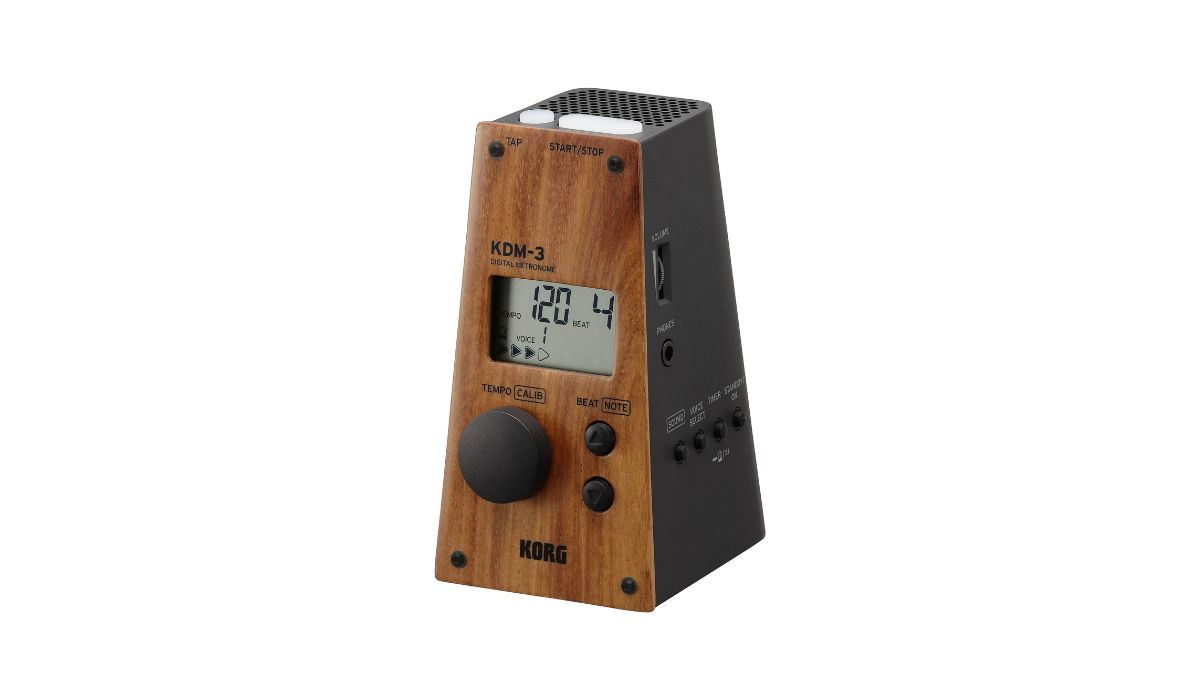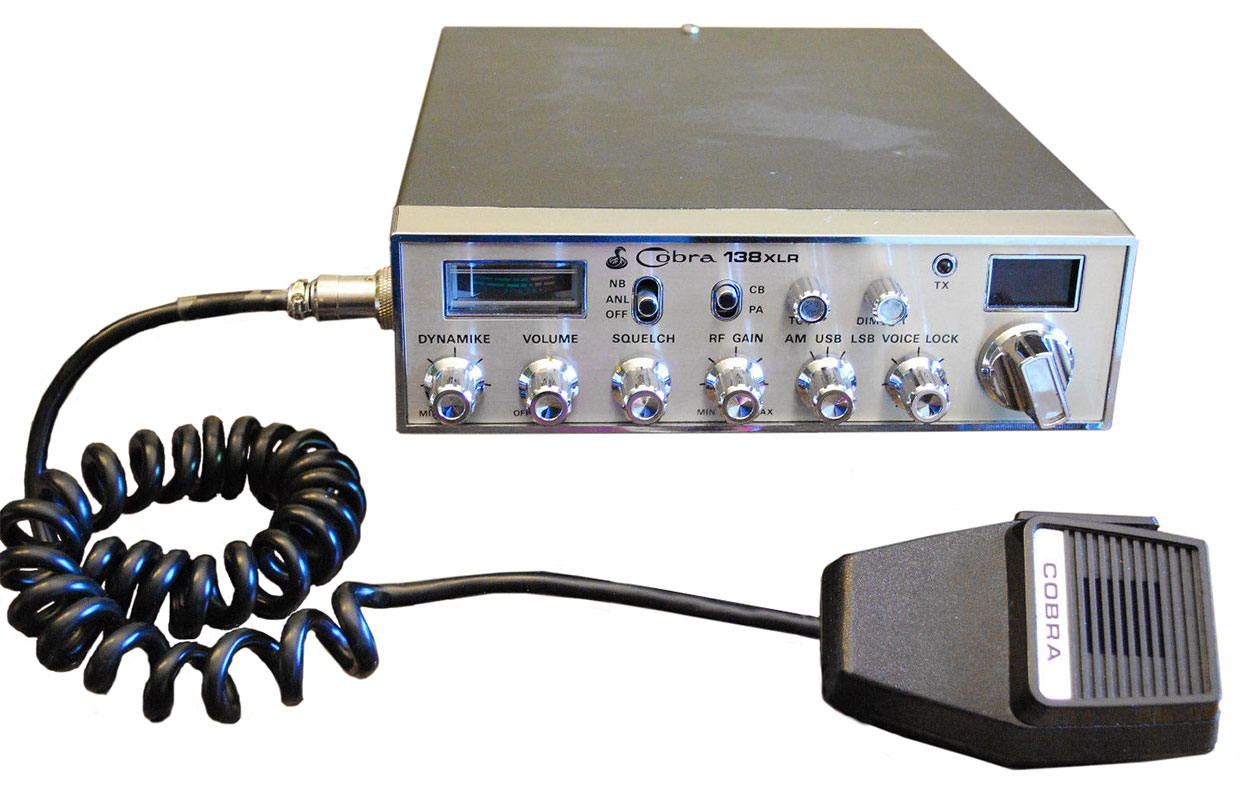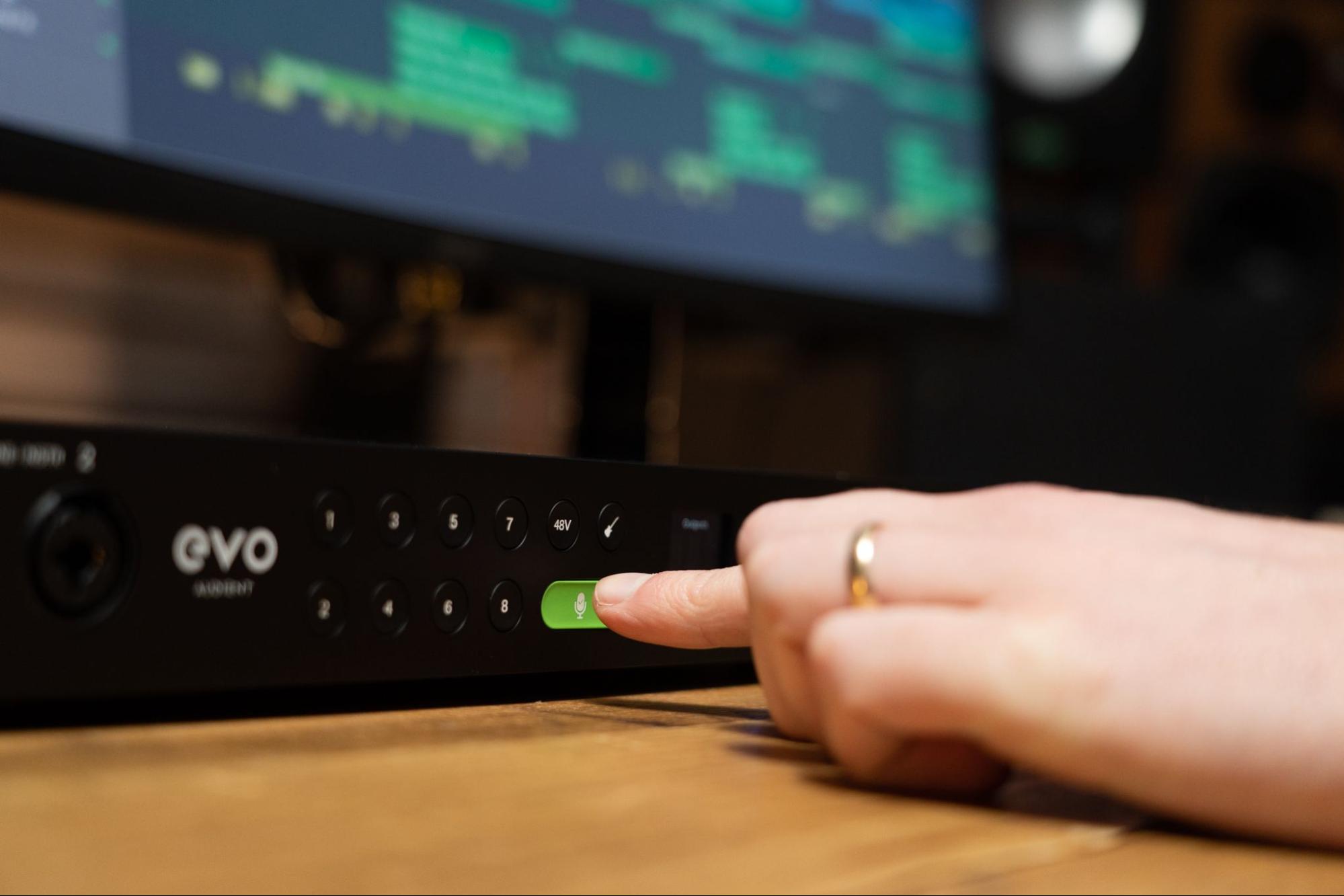Home>Devices & Equipment>Radio>How To Calibrate CB Radio
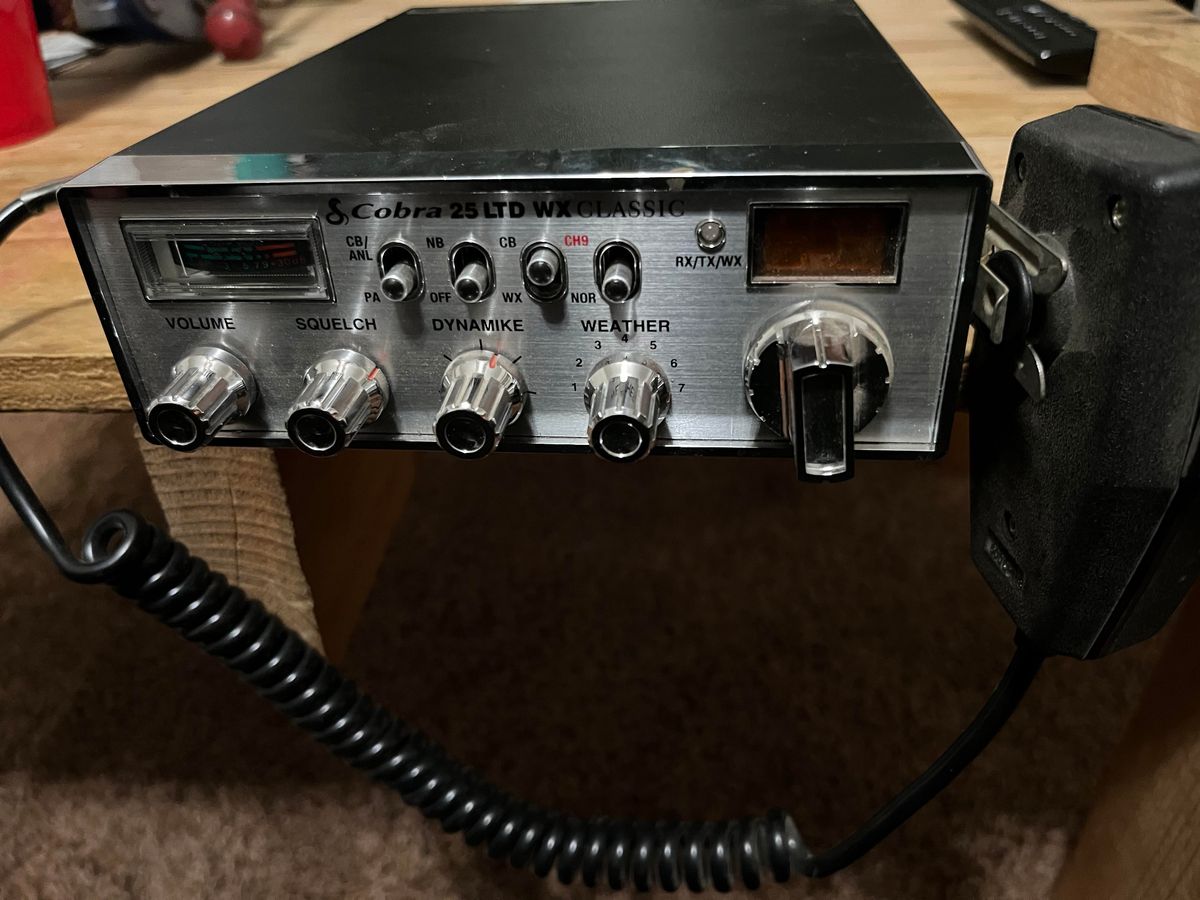

Radio
How To Calibrate CB Radio
Modified: January 22, 2024
Learn how to calibrate your CB radio with this step-by-step guide. Follow our tips and tricks to fine-tune your radio for optimal performance.
(Many of the links in this article redirect to a specific reviewed product. Your purchase of these products through affiliate links helps to generate commission for AudioLover.com, at no extra cost. Learn more)
Table of Contents
Introduction
Welcome to the world of CB radios, a form of communication that has been used by truckers, off-roaders, and radio enthusiasts for decades. CB radios, also known as Citizens Band radios, provide a way for individuals to communicate over short distances using specific radio frequencies. Whether you’re embarking on a road trip or participating in a convoy, having a properly calibrated CB radio is essential for clear and effective communication.
In this article, we will explore the basics of CB radios and delve into the importance of calibrating them. We will discuss the tools and step-by-step process involved in calibrating a CB radio, as well as some helpful tips and troubleshooting advice. By the end, you’ll have a comprehensive understanding of how to ensure that your CB radio is functioning optimally.
CB radios are not just a relic from the past; they continue to be a valuable and reliable communication tool in various industries and recreational activities. Whether you’re a truck driver navigating the highways, an off-roader traversing rough terrains, or a radio enthusiast exploring the airwaves, having a calibrated CB radio can greatly enhance your communication capabilities. So, let’s dive in and explore the world of CB radio calibration!
Understanding CB Radios
Before diving into the intricacies of calibrating CB radios, it’s essential to have a solid understanding of these devices and how they operate. CB radios operate on a specific set of frequencies within the 27 MHz Citizens Band. These frequencies are reserved for personal and business use, allowing individuals to communicate over short distances, typically up to a few miles.
CB radios are relatively simple in design, consisting of a transmitter, receiver, microphone, and control knobs. The transmitter converts your voice into radio waves, which are then transmitted through an antenna. The receiver, on the other hand, picks up incoming radio waves and converts them back into sound waves that you can hear through the speaker.
One of the most important aspects of CB radios is their power output, measured in watts. The higher the wattage, the greater the range and clarity of communication. Most CB radios operate on either 4 or 40 watts, with 4-watt models being more common for personal use.
CB radios also feature different channel options. The standard CB radio has 40 channels, each labeled with a unique number. Channel 9 is designated as the emergency channel, where you can seek help in case of an emergency. Additionally, there are also “sideband” channels, which allow for enhanced long-range communication.
It’s important to note that CB radios have certain limitations. Due to their lower power output and reliance on line-of-sight communication, their range is limited compared to other forms of radio communication. Buildings, mountains, and other obstacles can obstruct the signal, reducing the effective range. However, with proper calibration and antenna setup, you can maximize your CB radio’s performance within its limitations.
Now that we have a better understanding of CB radios and how they work, let’s explore why calibrating them is so crucial.
Why Calibrating CB Radios is Important
Calibrating your CB radio is a critical step in ensuring optimal performance and communication clarity. Here are some key reasons why calibrating CB radios is essential:
- Power Output: Calibrating your CB radio ensures that it is operating at the correct power output. This ensures effective transmission and reception of signals, allowing you to communicate over longer distances and in challenging conditions.
- Clarity and Signal Strength: Calibrating your CB radio improves signal clarity and strength. It helps eliminate distortion and unwanted noise, resulting in clear and crisp communication. Proper calibration also mitigates the risk of signal bleeding onto adjacent channels, which can cause interference with other users.
- Legality: In many countries, including the United States, it is a legal requirement to have a properly calibrated CB radio. This ensures compliance with regulations and helps prevent interference with other radio services. By calibrating your CB radio, you can avoid potential legal issues and operate within the designated frequency ranges.
- Battery Life: Calibrating your CB radio optimizes its power consumption. By ensuring that the radio is operating at the correct power output, you can extend the battery life and avoid unnecessary drain. This is especially important for portable CB radios used on long trips or in remote areas where access to power sources may be limited.
- Improved Range: With proper calibration, you can maximize the range of your CB radio. By fine-tuning the antenna and ensuring optimal power output, you can enhance the transmission and reception capabilities of your radio, allowing for communication over longer distances.
Overall, calibrating your CB radio is vital for achieving the best performance and maintaining compliance with regulations. It improves signal clarity, extends battery life, and ensures efficient communication. In the next section, we’ll discuss the tools needed for calibrating a CB radio.
Tools Needed for Calibrating a CB Radio
When it comes to calibrating your CB radio, having the right tools at your disposal is crucial. Here are the essential tools you’ll need:
- SWR Meter: An SWR (Standing Wave Ratio) meter is a vital tool for calibrating your CB radio. It measures the efficiency of the antenna system by analyzing the amount of power reflected back into the radio. This allows you to adjust the antenna for optimum performance and minimize signal loss.
- Coaxial Cable: A high-quality coaxial cable is necessary to connect the SWR meter to your CB radio. Ensure that the cable is in good condition and has proper connectors to minimize signal loss. For optimal results, choose a low-loss cable that matches your specific CB radio and antenna setup.
- Adjustable Wrench: A wrench is needed to loosen and tighten the antenna connectors during the calibration process. Ensure that you have the appropriate size for your specific antenna.
- Antenna Mounting Hardware: Depending on your setup, you may need various mounting hardware, such as brackets, bolts, and clamps, to secure your antenna to your vehicle or a designated mounting location. Refer to the instructions provided with your antenna for the correct hardware.
- External Speaker: While not essential for calibration, having an external speaker can greatly enhance the audio quality of your CB radio. It allows for clearer and louder communication, especially in noisy environments. Consider investing in a high-quality external speaker to improve the overall listening experience.
- Optional Tools: Depending on your specific needs and preferences, you may find the following tools helpful: a multimeter for measuring power output, a coaxial cable cutter and stripper for clean cable preparation, and an antenna analyzer for advanced calibration and analysis.
By having these tools readily available, you’ll be well-equipped to calibrate your CB radio effectively. In the next section, we’ll provide a step-by-step guide to help you through the calibration process.
Step-by-Step Guide to Calibrating a CB Radio
Calibrating a CB radio may seem intimidating at first, but by following these step-by-step instructions, you’ll be able to calibrate your radio with ease:
- Choose the Right Location: Find an open area away from buildings and other obstructions. This will minimize signal interference and provide a clear line of sight for communication.
- Connect the SWR Meter: Connect one end of the coaxial cable to the SWR meter and the other end to the antenna connector on your CB radio. Make sure the connections are secure and tight.
- Set the Meter to SWR Mode: Set the SWR meter to the SWR mode to prepare for calibration. Follow the instructions provided with your SWR meter for specific details.
- Set the CB Radio to Channel 1: Tune your CB radio to channel 1, which is the lowest channel on the CB band.
- Key the Microphone: Press and hold the microphone’s push-to-talk (PTT) button to transmit a continuous signal.
- Read the SWR Meter: Look at the SWR meter as you transmit and observe the SWR reading. Ideally, you want the reading to be as low as possible, preferably below 1.5. If the reading is higher than recommended, adjustments need to be made.
- Adjust the Antenna Length: If the SWR reading is too high, the antenna is too long. Gradually shorten the antenna in small increments, around 1/8 inch at a time, and recheck the SWR reading after each adjustment. Continue this process until you achieve an acceptable SWR reading.
- Adjust the Antenna Position: If the SWR reading is still too high, try adjusting the position of the antenna. Move it slightly up, down, or to the sides to find the optimal position with the lowest SWR reading.
- Repeat and Fine-tune: Once you’ve achieved a low SWR reading on channel 1, repeat the process on channel 40, which is the highest channel on the CB band. Make any necessary adjustments to maximize the SWR reading on this channel.
- Finalize the Calibration: After achieving optimal SWR readings on both channel 1 and 40, tighten all the antenna and coaxial cable connections securely. Ensure that everything is properly fastened to maintain the calibration.
Remember, the calibration process may vary slightly depending on your specific equipment and antenna setup. Always refer to the user manuals provided with your CB radio, SWR meter, and antenna for detailed instructions relevant to your setup.
By following these steps and taking the time to calibrate your CB radio properly, you’ll experience improved communication clarity and range. In the next section, we’ll share some tips and tricks to enhance the calibration process.
Tips and Tricks for Calibrating CB Radios
Calibrating CB radios can be a precise process, but with these helpful tips and tricks, you’ll be able to optimize your calibration and achieve the best possible performance:
- Use High-Quality Coaxial Cable: Invest in a high-quality coaxial cable with low signal loss to ensure maximum efficiency and minimal interference.
- Check Antenna Connections: Regularly inspect and clean the antenna connections to maintain good electrical contact. Loose or corroded connections can affect your calibration and signal quality.
- Adjust in Small Increments: When adjusting the antenna length, make small, incremental changes of around 1/8 inch at a time. This allows for fine-tuning and prevents drastic overadjustment.
- Maintain Proper Grounding: Ensure that your antenna system has a solid ground connection. Proper grounding helps reduce signal interference and improves signal strength.
- Monitor Environmental Factors: Keep an eye on environmental factors like weather conditions and nearby structures. These can impact the calibration and signal strength of your CB radio.
- Consider Using an Antenna Tuning Device: An antenna tuning device, such as an antenna analyzer, can provide more accurate readings and simplify the calibration process. While optional, it can save you time and effort in achieving optimal performance.
- Experiment with Antenna Placement: If possible, experiment with different antenna placements to find the position that yields the best signal strength. Sometimes, slight adjustments in the antenna’s height or location can have a significant impact on performance.
- Collaborate with Others: Engage with the CB radio community and participate in online forums or local clubs. This can provide valuable insights and recommendations from experienced CB radio enthusiasts who have gone through the calibration process.
- Perform Regular Maintenance: Regularly inspect and clean your CB radio, antenna, and coaxial cable to ensure they are in good condition. Dirt, dust, and debris can affect your radio’s performance if not properly maintained.
- Practice Safe Calibration: Always exercise safety precautions when accessing and working with your CB radio and antenna. Follow manufacturer instructions and use insulated tools to prevent electrical shock.
By incorporating these tips and tricks into your calibration process, you’ll be able to achieve optimal performance and enjoy enhanced communication with your CB radio.
In the next section, we’ll address common calibration issues that may arise and provide troubleshooting tips to overcome them.
Common CB Radio Calibration Issues and Troubleshooting
While calibrating your CB radio, you may encounter some common issues that can affect signal clarity and performance. Here are a few common issues and troubleshooting tips to resolve them:
- High SWR Readings: If you’re consistently getting high SWR readings, it may indicate an issue with the antenna or its setup. Check for loose or corroded connections, ensure the antenna is properly grounded, and adjust the antenna length according to the SWR meter readings.
- Interference or Noise: If you experience excessive interference or noise during communication, there may be nearby sources causing signal interference. Try relocating to a different spot or adjusting the antenna’s position to minimize the interference. Additionally, ensure that your radio and antenna installation meet proper grounding requirements.
- Inconsistent Range: If you notice that the range of your CB radio is inconsistent, it could be due to factors like environmental conditions or obstacles obstructing the signal. Consider adjusting the antenna height or using a different location to improve the line-of-sight communication.
- Low Transmit/Receive Range: If your CB radio’s transmit and receive range are noticeably reduced, it may indicate a problem with the antenna. Check for any physical damage or obstructions, such as bird nests or debris, on the antenna. Also, ensure that the antenna is properly connected to the radio and is securely mounted.
- Dead Zones: Dead zones are areas where you experience no signal or very weak reception. This can occur due to geographical features or metallic structures obstructing the signal. In such cases, repositioning your vehicle or changing locations may help improve reception.
- Interference with Electronics: Some CB radios may experience interference with other electronic devices, such as car stereos or power lines. This can result in background noise or static during communication. To resolve this issue, try repositioning the radio or adding shielding to reduce electromagnetic interference.
- Excessive Power Drain: If your CB radio is draining the battery quickly, it may be operating at a higher power output than required. Double-check the power settings on your radio and adjust it to the appropriate level to conserve battery life.
If you encounter persistent issues or are unable to resolve them on your own, consulting a professional CB radio technician or seeking assistance from experienced CB radio users can be beneficial.
By troubleshooting these issues and addressing them promptly, you’ll be able to maintain optimal calibration and enjoy clear and reliable communication with your CB radio.
In the concluding section, we’ll summarize the importance of CB radio calibration and its role in improving communication capabilities.
Conclusion
Calibrating your CB radio is an essential step in ensuring optimal performance and communication clarity. By understanding the basics of CB radios and the importance of calibration, you can maximize the range, signal strength, and overall efficiency of your radio.
Throughout this article, we explored the fundamentals of CB radios, their components, and how they operate. We discussed why calibrating CB radios is important, highlighting the benefits of power output optimization, signal clarity improvement, legal compliance, extended battery life, and enhanced communication range.
We also provided a detailed step-by-step guide for calibrating a CB radio, including tips and tricks to enhance the calibration process and troubleshooting common issues that may arise. From choosing the right location and connecting the SWR meter to adjusting the antenna length and fine-tuning the calibration on different channels, these guidelines will help you achieve the best performance from your CB radio.
Remember, proper maintenance, regular check-ups, and following safety precautions are vital for maintaining optimal CB radio performance. By incorporating these practices, you can ensure long-term reliability and enjoyment from your CB radio system.
Whether you’re a truck driver, off-roader, or radio enthusiast, calibrating your CB radio opens up a world of clearer communication and improved range. So, take the time to calibrate your CB radio and explore the possibilities that this timeless form of communication has to offer.
Happy calibrating and happy chatting!

